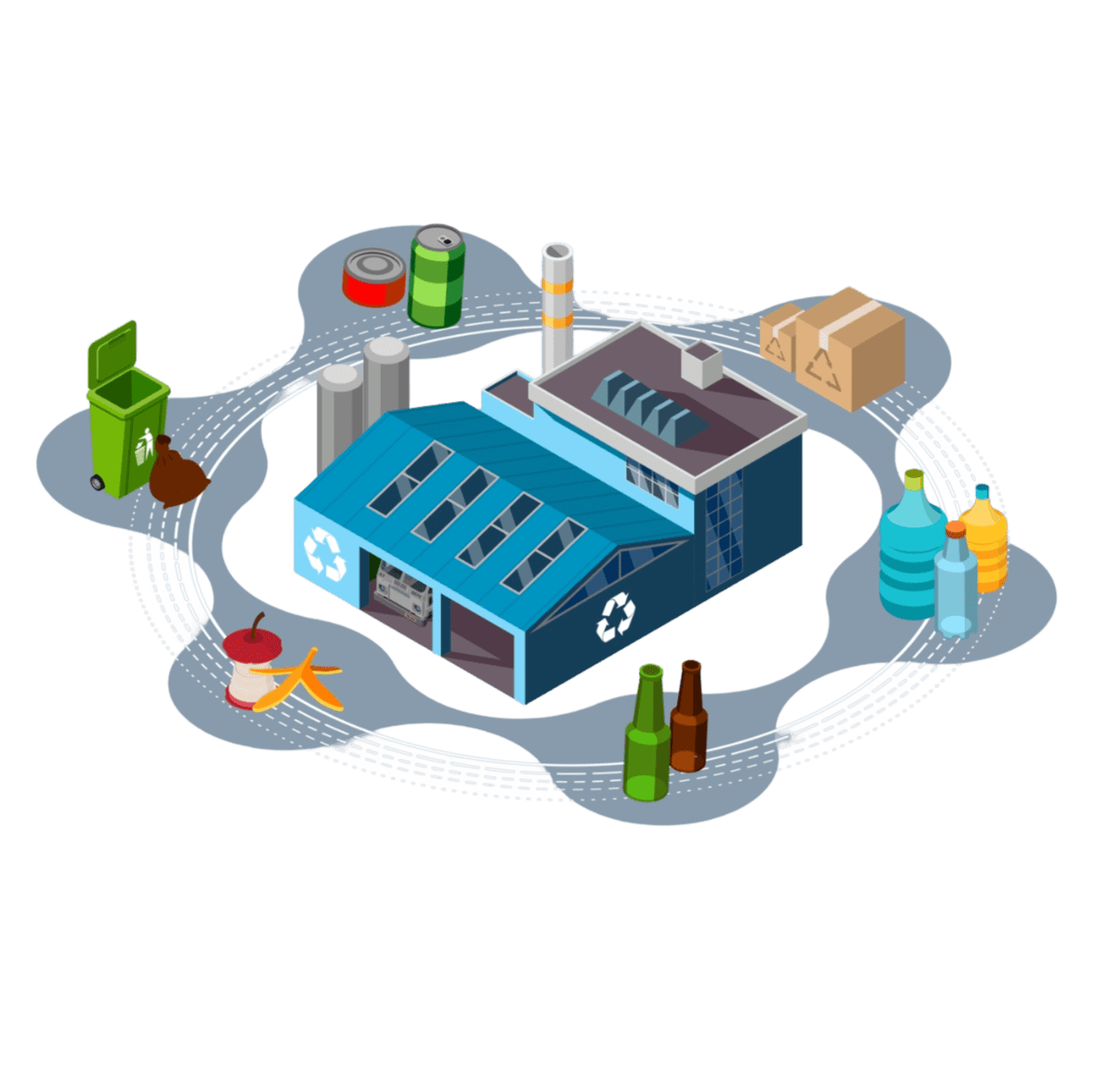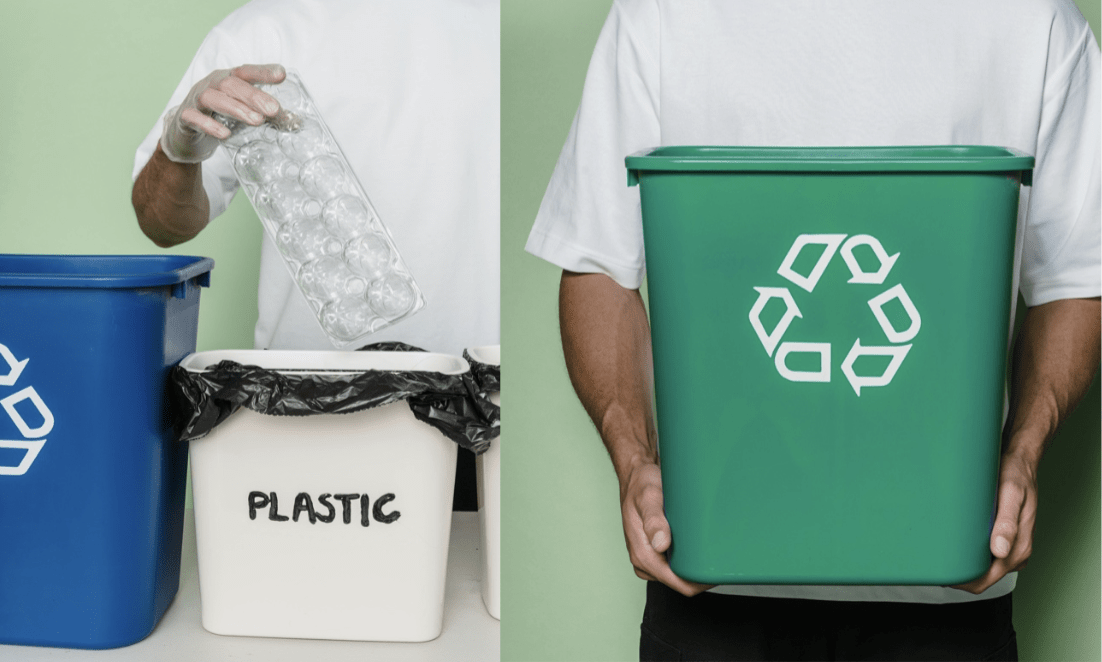What Are MRFs?
OVERVIEW
EPA Waste Hierarchy
In the US, states and counties follow the Environment Protection Agency’s (EPA) waste management hierarchy of managing waste from the most environmentally sound option to the last one, starting with reduction at source, reusing resources, recycling materials, incineration
with energy recovery, and then landfilling as the lowest priority.[1]

MEANING
Defining MRF
A Materials Recovery Facility (MRF), commonly known as a Material Recycling Facility. MRF is a plant that segregates recyclable materials using advanced machinery, the product is then sold to end buyers.[4,5] These MRFs sort a wide variety of recyclable materials such as, but not limited to, mixed paper, old newsprint (ONP), office paper, and old corrugated containers (OCC), plastics, aluminum/steel cans, glass bottles, etc.[6] MRFs combine mechanical and manual processes to segregate recyclable materials. Important design factors to maximize MRF efficiency include increased material flow rates, reduced residues, minimized human labor, increased labor safety, production of higher quality outputs, and minimized overall processing costs.[7]

PROCEDURE
How MRFs Work?
1
Collection & Transportation
Recyclable materials are collected and then delivered to the MRF.
Preliminary Sorting
Manual sorters remove large contaminants.
2
3
Automated Sorting
Mechanical systems like drum feeder, conveyor lines, air classification to segregate materials.
Magnetic Sorting & Eddy Currents
Separate ferrous and non-ferrous metals.
4
5
Optical Sorting
Identify and sort materials based on shape, size and color.
Baling
Sorted materials compacted and sent for remanufacturing.
6
VALUE
Benefits of MRFs
Diversion of Waste from Landfills
Waste diverted from incineration and landfills
Energy Saving
Recycling uses less energy in comparison to manufacturing new products from scratch.
Pollution Reduction
Reduces greenhouse gas emissions caused by improper disposal of waste
Employment Generation
Creates job opportunities in the recycling sector.
Promotes Sustainability
Supports a circular economy by reusing products rather than disposing them.
Supports Local Environmental Efforts
Creates environmental awareness and promotes responsible consumer practices.
References
- Manfredi, S., & Pant, R. (2013). Improving the environmental performance of bio-waste management with life cycle thinking (LCT) and life cycle assessment (LCA). International Journal of Life Cycle Assessment, 18(1), 285–291.
- Environmental Protection Agency (EPA). (2020). Advancing sustainable materials management: 2018 fact sheet assessing trends in materials generation and management in the United States.
- Van Ewijk, S., & Stegemann, J. A. (2016). Limitations of the waste hierarchy for achieving absolute reductions in material throughput. Journal of Cleaner Production, 132, 122–128.
- Pressley, P. N., Levis, J. W., Damgaard, A., Barlaz, M. A., & DeCarolis, J. F. (2015). Analysis of material recovery facilities for use in life-cycle assessment. Waste Management, 35, 307–317.
- Chertow, M., Reck, B. K., Wrzesniewski, A., & Calli, B. (2024). Outlook on the future role of robots and AI in material recovery facilities: Implications for U.S. recycling and the workforce. Journal of Cleaner Production, 470, 143234.
- Leahy, M. (2023, July 25). What is a materials recovery facility (MRF)? Rubicon. Retrieved from https://www.rubicon.com/blog/materials-recovery-facility/
- Kessler Consulting. (2009, September). Materials Recovery Facility Technology Review. Retrieved from https://www.nswai.org/docs/MATERIALS RECOVERY FACILITY TECHONOLOGY REVIEW.pdf
- www.freepik.com

